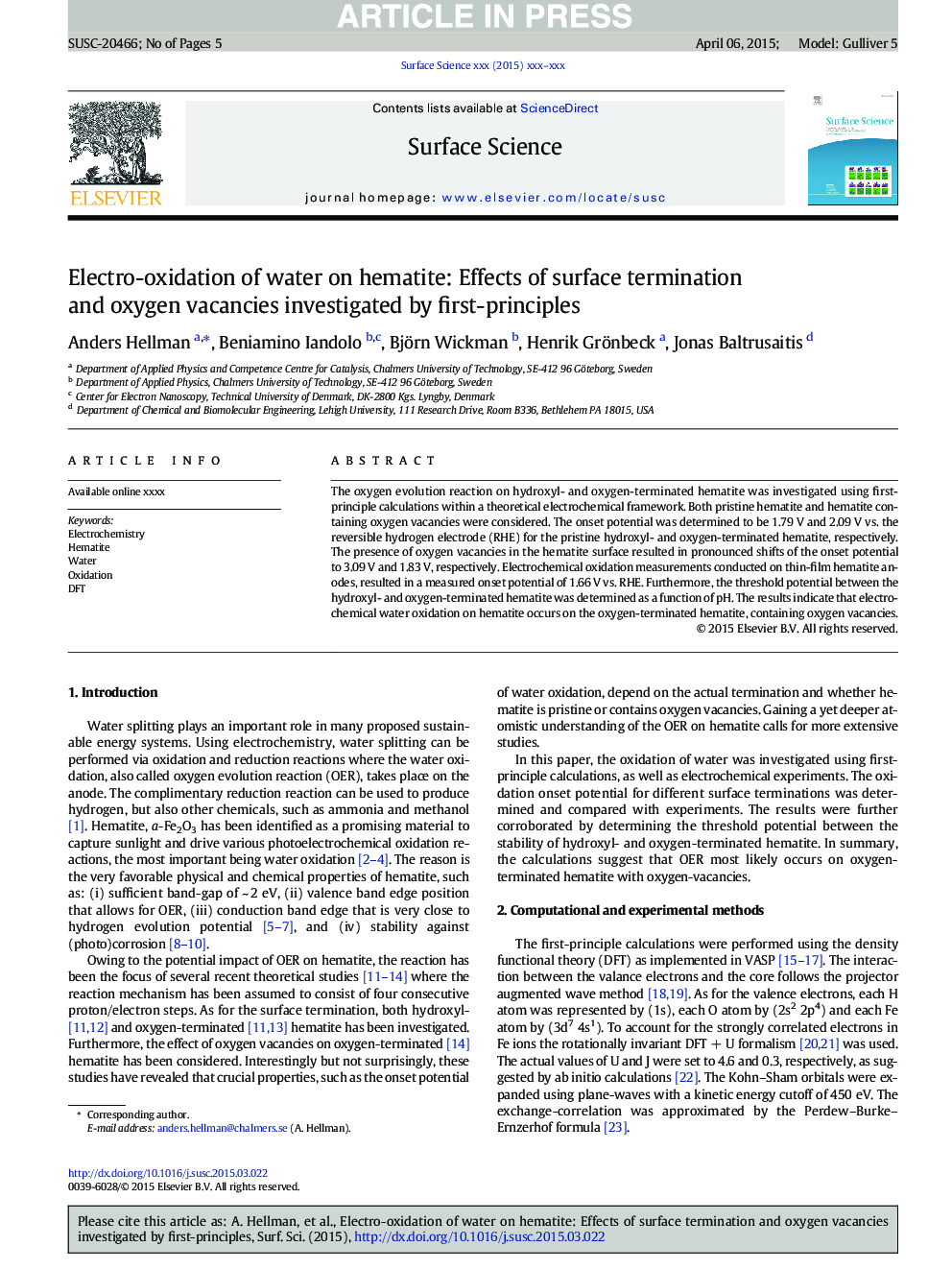| Article ID | Journal | Published Year | Pages | File Type |
|---|---|---|---|---|
| 5421685 | Surface Science | 2015 | 5 Pages |
Abstract
The oxygen evolution reaction on hydroxyl- and oxygen-terminated hematite was investigated using first-principle calculations within a theoretical electrochemical framework. Both pristine hematite and hematite containing oxygen vacancies were considered. The onset potential was determined to be 1.79Â V and 2.09Â V vs. the reversible hydrogen electrode (RHE) for the pristine hydroxyl- and oxygen-terminated hematite, respectively. The presence of oxygen vacancies in the hematite surface resulted in pronounced shifts of the onset potential to 3.09Â V and 1.83Â V, respectively. Electrochemical oxidation measurements conducted on thin-film hematite anodes, resulted in a measured onset potential of 1.66Â V vs. RHE. Furthermore, the threshold potential between the hydroxyl- and oxygen-terminated hematite was determined as a function of pH. The results indicate that electrochemical water oxidation on hematite occurs on the oxygen-terminated hematite, containing oxygen vacancies.
Related Topics
Physical Sciences and Engineering
Chemistry
Physical and Theoretical Chemistry
Authors
Anders Hellman, Beniamino Iandolo, Björn Wickman, Henrik Grönbeck, Jonas Baltrusaitis,
